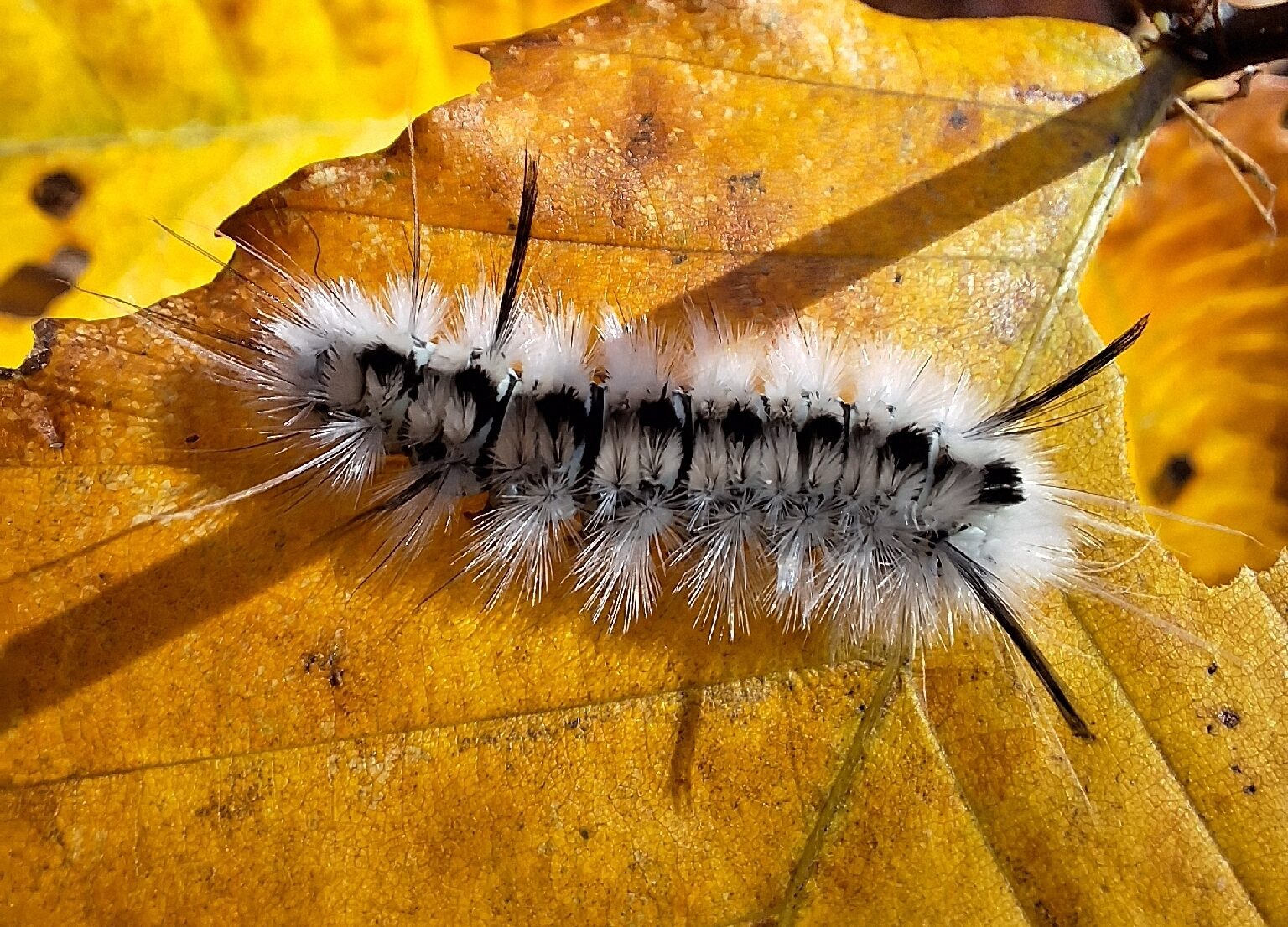
The millionth research-grade observation of a Hickory Tussock Moth (Lophocampa caryae) caterpillar by iNaturalist user Sue Staats
Vermonters marvel at the life around us all the time. What if all those observations were shared online, creating a living record of biodiversity in Vermont? And what if that could be used to monitor changes and learn more about nature and how to protect it?
That was the vision behind iNaturalist Vermont.
Now, we’re excited to announce that this month, iNaturalist Vermont topped one million research-grade biodiversity records! The submission that brought Vermont to this major collective achievement was an observation of a Hickory Tussock Moth ( Lophocampa caryae ) caterpillar by iNaturalist user Sue Staats on October 21st, which was verified by three others, including moth expert Joanne Russo.
This milestone was made possible through the work of thousands of people and many cooperating institutions. Launched in 2013 as part of the Vermont Atlas of Life at the Vermont Center for Ecostudies, iNaturalist Vermont has quickly become one of the largest biodiversity databases in the state. It currently holds more than 1.6 million observations shared by nearly 34,000 experts and laypeople alike.
iNaturalist.org is a globally-accessible, crowd-sourced platform for sharing observations of species aided by computer vision identification. It allows people to snap photos of animals, fungi, and plants, and upload them. It provides a suggested match, and then invites members of the iNaturalist community to verify the record to make it research-grade.
All of the photos of plants, animals, and fungi, plus recordings of vocalizing animals, shared with iNaturalist Vermont (nearly 10,000 species now) do more than help users learn about the life around them—they also help scientists map and monitor species’ distributions here in Vermont and around the world. More than a live-action field guide, iNaturalist is also a social network for naturalists to record information on species, meet others with similar interests and learn.
It takes a village for an observation to become research-grade. That’s when it has a date, location, photos or recorded sounds as evidence, and two-thirds of the iNaturalist community identifiers, including other naturalists and scientists, agree on the species.
These research-grade data are shared continually with the Vermont Atlas of Life and the Global Biodiversity Information Facility (GBIF). This international open data infrastructure allows anyone, anywhere, to access data about all types of life on Earth, shared across national boundaries via the Internet.
iNaturalist Vermont research-grade observations join millions of other biodiversity records at the Vermont Atlas of Life, and provide an incredible resource for informing scientific research and policy through ‘big data’ analyses. Hundreds of peer-reviewed research papers and reports have relied on VAL-mediated data—from natural history findings to ranking species conservation status, detailed land management plans and invasive species monitoring, and even sophisticated computer models that seek to understand the impact of changing conditions for life here in Vermont and around the planet…now and into the future.
I was a very early user of iNaturalist.org, and I quickly realized the potential it had as a platform to gather important biodiversity data, and allow everyone to join and contribute to projects like the Vermont Atlas of Life . But I never guessed that so many people would join, and co-create this incredible resource.
Join us at iNaturalist Vermont and get outdoors to discover, record and share the biodiversity around you. Whether it is a common or rare species, there is so much more to learn about our natural heritage.

Congrats to Kent and the rest of the VAL Team on a major milestone reached!
So proud of your awesome work!